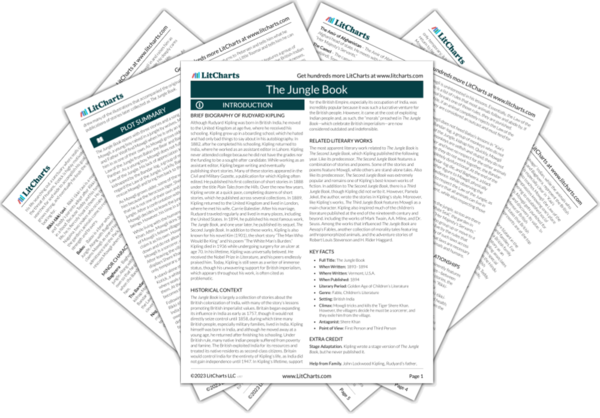Although Rudyard Kipling was born in British India, he moved to the United Kingdom at age five, where he received his schooling. Kipling grew up in a boarding school, which he hated and had only bad things to say about in his autobiography. In 1882, after he completed his schooling, Kipling returned to India, where he worked as an assistant editor in Lahore. Kipling never attended college because he did not have the grades nor the funding to be a sought-after candidate. While working as an assistant editor, Kipling began writing and eventually publishing short stories. Many of these stories appeared in the
Civil and Military Gazette, a publication for which Kipling often edited. He published his first collection of short stories in 1888 under the title
Plain Tales from the Hills. Over the new few years, Kipling wrote at a quick pace, completing dozens of short stories, which he published across several collections. In 1889, Kipling returned to the United Kingdom and lived in London, where he met his wife, Carrie Balestier. After his marriage, Rudyard traveled regularly and lived in many places, including the United States. In 1894, he published his most famous work,
The Jungle Book, and one year later, he published its sequel,
The Second Jungle Book. In addition to these works, Kipling is also known for his novel
Kim (1901), the short story “The Man Who Would Be King” and his poem “The White Man’s Burden.” Kipling died in 1936 while undergoing surgery for an ulcer at age 70. In his lifetime, Kipling was universally beloved. He received the Nobel Prize in Literature, and his peers endlessly praised him. Today, Kipling is still seen as a writer of immense status, though his unwavering support for British imperialism, which appears throughout his work, is often cited as problematic.
